Recombinant Feline CCL5 Protein
| Cat.No. : | CCL5-427F |
| Product Overview : | Recombinant Feline CCL5 Protein was expressed in E. coli. |
- Specification
- Gene Information
- Related Products
- Case Study
- Application
- Download
| Species : | Feline |
| Source : | E.coli |
| Protein Length : | Tyr26-Asn92 (Lys84Tyr and Gly85 del) |
| Description : | CCL5, also known as RANTES (Regulated upon Activation, Normal T cell Expressed and presumably Secreted), is an 8 kDa beta -chemokine that plays a primary role in the inflammatory immune response by means of its ability to attract and activate leukocytes. Human and mouse RANTES exhibit cross-species activity on human and mouse cells. Mature feline CCL5 shares 84% aa seqeuence identity with canine CCL5 and 71% - 75% with cotton rat, human, mouse, and rat CCL5. CCL5 is secreted by many cell types at inflammatory sites, and it exerts a wide range of activities through the receptors CCR1, CCR3, CCR4, and CCR5. Inflammatory responses can be impaired by the sequestration of CCL5 by the cytomegalovirus protein US28. In humans, CCR5 binding to CCL5 inhibits the infectivity of R5 (M-tropic) but not X4 (T-tropic) strains of HIV-1. The two N-terminal residues of CCL5 can be removed by CD26/DPPIV, generating a protein that functions as a chemotaxis inhibitor and more effectively blocks M-tropic HIV-1 infection of monocytes. Oligomerization of CCL5 on glycosaminoglycans is required for CCR1-mediated leukocyte adhesion and activation as well as CCL5's interaction with the chemokine CXCL4/PF4. The deposition of CCL5 on activated vascular endothelial cells is crucial for monocyte adhesion to damaged vasculature, but CCL5 oligomerization is not required for the extravasation of adherent leukocytes. CCL5 is upregulated in breast cancer and promotes tumor progression through the attraction of proinflammatory macrophages in addition to its actions on tumor cells, stromal cells, and the vasculature. |
| Form : | Lyophilized from a 0.2 μm filtered solution in Acetonitrile and TFA with BSA as a carrier protein. |
| Bio-activity : | Measured by its ability to chemoattract BaF3 mouse pro‑B cells transfected with human CCR5. The ED50 for this effect is 3.5-20 ng/mL. |
| Molecular Mass : | 7.7 kDa |
| Endotoxin : | <0.01 EU per 1 μg of the protein by the LAL method. |
| Purity : | >97%, by SDS-PAGE under reducing conditions and visualized by silver stain. |
| Storage : | Use a manual defrost freezer and avoid repeated freeze-thaw cycles. 12 months from date of receipt, -20 to -70 centigrade as supplied. 1 month, 2 to 8 centigrade under sterile conditions after reconstitution. 3 months, -20 to -70 centigrade under sterile conditions after reconstitution. |
| Shipping : | The product is shipped at ambient temperature. Upon receipt, store it immediately at the temperature recommended below. |
| Reconstitution : | Reconstitute at 100 μg/mL in sterile PBS containing at least 0.1% human or bovine serum albumin. |
| Publications : |
Recruitment of classical monocytes can be inhibited by disturbing heteromers of neutrophil HNP1 and platelet CCL5 (2015)
|
| Gene Name | CCL5 C-C motif chemokine ligand 5 [ Felis catus (domestic cat) ] |
| Official Symbol | CCL5 |
| Synonyms | CCL5; C-C motif chemokine ligand 5; chemokine (C-C motif) ligand 5; D17S136Enormally T-expressed, and presumably secreted; EoCP; Eosinophil chemotactic cytokine; RANTES; SISd; SIS-delta; small inducible cytokine A5 (RANTES); small inducible cytokine subfamily A (Cys-Cys), member 5; Small-inducible cytokine A5; T cell-specific protein P228; T-cell specific protein p288; TCP228T-cell-specific protein RANTES |
| Gene ID | 493689 |
| mRNA Refseq | NM_001009827.1 |
| Protein Refseq | NP_001009827.1 |
| UniProt ID | Q8SQ40 |
| ◆ Recombinant Proteins | ||
| CCL5-0642H | Recombinant Human CCL5 Protein, GST-Tagged | +Inquiry |
| CCL5-2954HF | Recombinant Full Length Human CCL5 Protein, GST-tagged | +Inquiry |
| CCL5-512H | Active Recombinant Mouse Chemokine (C-C motif) Ligand 5, HIgG1 Fc-tagged | +Inquiry |
| Ccl5-30M | Active Recombinant Mouse/Rat CCL5 Protein | +Inquiry |
| CCL5-165C | Active Recombinant Human CCL5 Protein (68 aa) | +Inquiry |
| ◆ Cell & Tissue Lysates | ||
| CCL5-2706HCL | Recombinant Human CCL5 cell lysate | +Inquiry |
Case 1: Seo W, et al. Nat Commun. 2020
CCL5 is a unique chemokine that has specific stage and cell type specificities in controlling inflammation, but exactly how these specificities are achieved is not fully understood. In this study, two stage-specific enhancers: an enhancer closer to maintain the basal expression of CCL5 under normal conditions, while another enhancer located 1.35 Mb away promotes CCL5 expression when the cell is activated. Their action is inhibited by the RUNX/CBFβ complex, while SATB1 helps distant enhancers make contact with promoters. Removal of adjacent enhancers decreased CCL5 expression and increased the killing activity of tissue-resident T cells and NK cells, which was shown in mouse models as reduced melanoma metastasis. On the contrary, if RUNX3 mutations lead to increased CCL5 expression, the lung has more tumor metastasis.
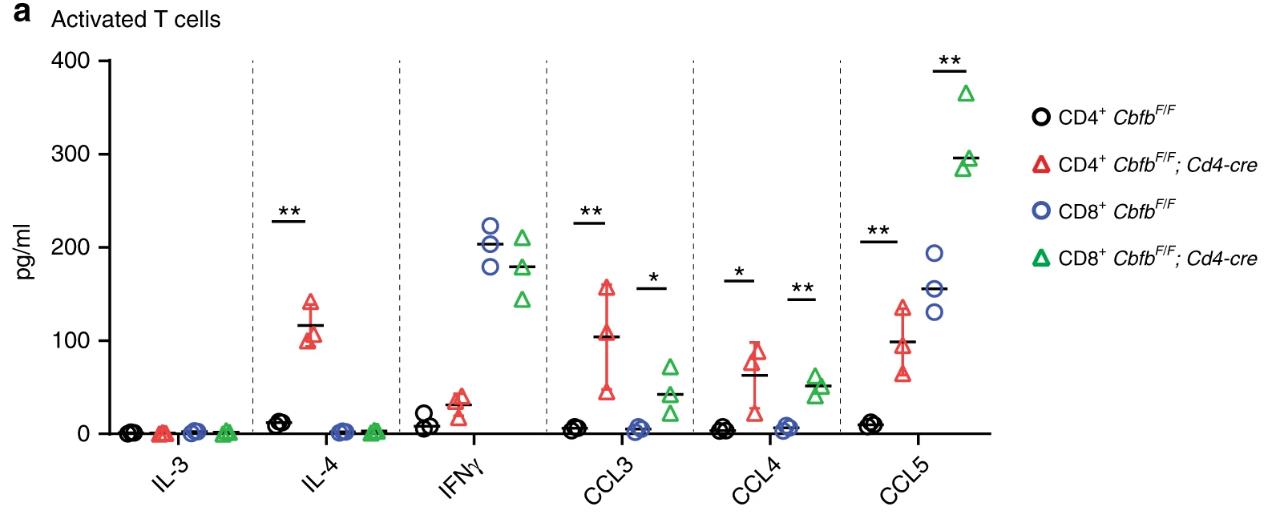
Fig1. Expression profiles assessed by ELISA of CCL3, CCL4, and CCL5 and the selected cytokines IL-3, IL-4, and IFNγ in supernatants of in vitro-stimulated CD4+ and CD8+ T cells.
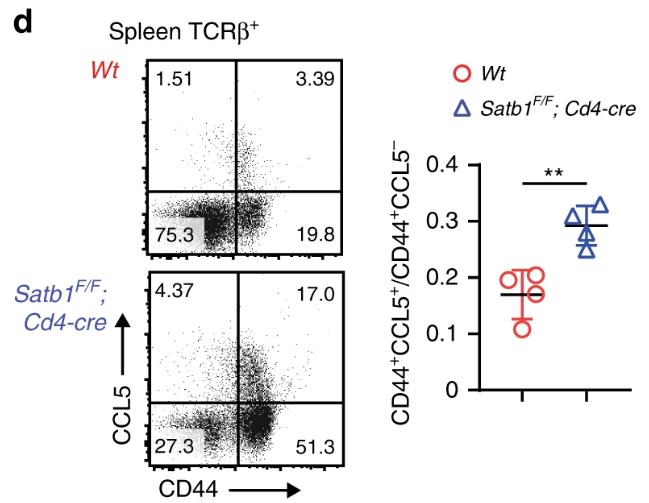
Fig2. Dot plots showing CCL5 expression in TCRβ+ T cells.
Case 2: Shan J, et al. Sci Rep. 2024
CCL5, a key player in human cancer progression, is pretty fascinating but still a bit of a mystery, especially when it comes to its multi-layered roles in the immune environment and cancer prognosis. Researchers took a deep dive into data from 33 different cancers to uncover how CCL5 acts in normal tissues compared to its odd behavior in diseases. They looked into its genetic changes, potential as a prognostic marker, involvement in various pathways, and how it interacts with the immune system and cancer treatments. Turns out, CCL5 has a unique expression pattern that makes it a potential diagnostic marker for cancer. It's crucial for shaping the tumor microenvironment across various cancers and is closely linked with immune checkpoints like TMB and MSI, which affect how well patients respond to immunotherapies. People with high CCL5 levels tend to have a better response to these treatments and a brighter outlook. They even did some hands-on lab work and found that reducing CCL5 can slow down kidney cancer cell growth and spread.
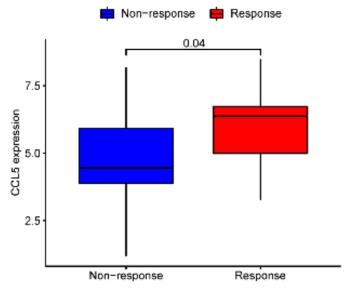
Fig1. The differences in CCL5 expression between ACT treatment response and non-response groups.
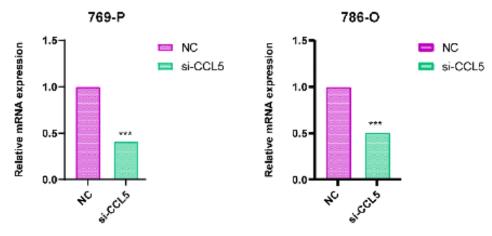
Fig2. QPCR verified the mRNA expression level of CCL5 in 769-P and 786-O cells after transfection with siRNA.
Recombinant Feline CCL5, also known as RANTES, is a noteworthy chemokine that's caught the attention of both scientists and industry pros. It plays a big part in the immune system by drawing in cells to fight off inflammation. This feature is key in studying how immune responses work, particularly in cats. By understanding how CCL5 operates, researchers can make strides in developing treatments for feline diseases and potentially apply these findings to other animals.
On the industrial side, the uses for recombinant Feline CCL5 are expanding. Its role in immune response makes it a promising candidate for crafting new veterinary drugs and vaccines, aiming to keep our feline friends healthier. The versatility and importance of CCL5 make it a valuable tool in fields ranging from medical research breakthroughs to practical applications in pet healthcare, offering benefits that reach beyond just cats.
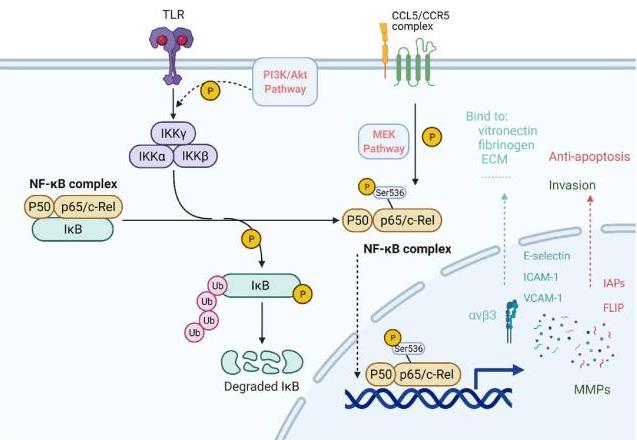
Fig1. CCL5/CCR5 axis in NF-κB pathway. (Zhen Zeng, 2021)
Not For Human Consumption!
Inquiry
- Reviews
- Q&As
Ask a Question for All CCL5 Products
Required fields are marked with *
My Review for All CCL5 Products
Required fields are marked with *
Inquiry Basket


